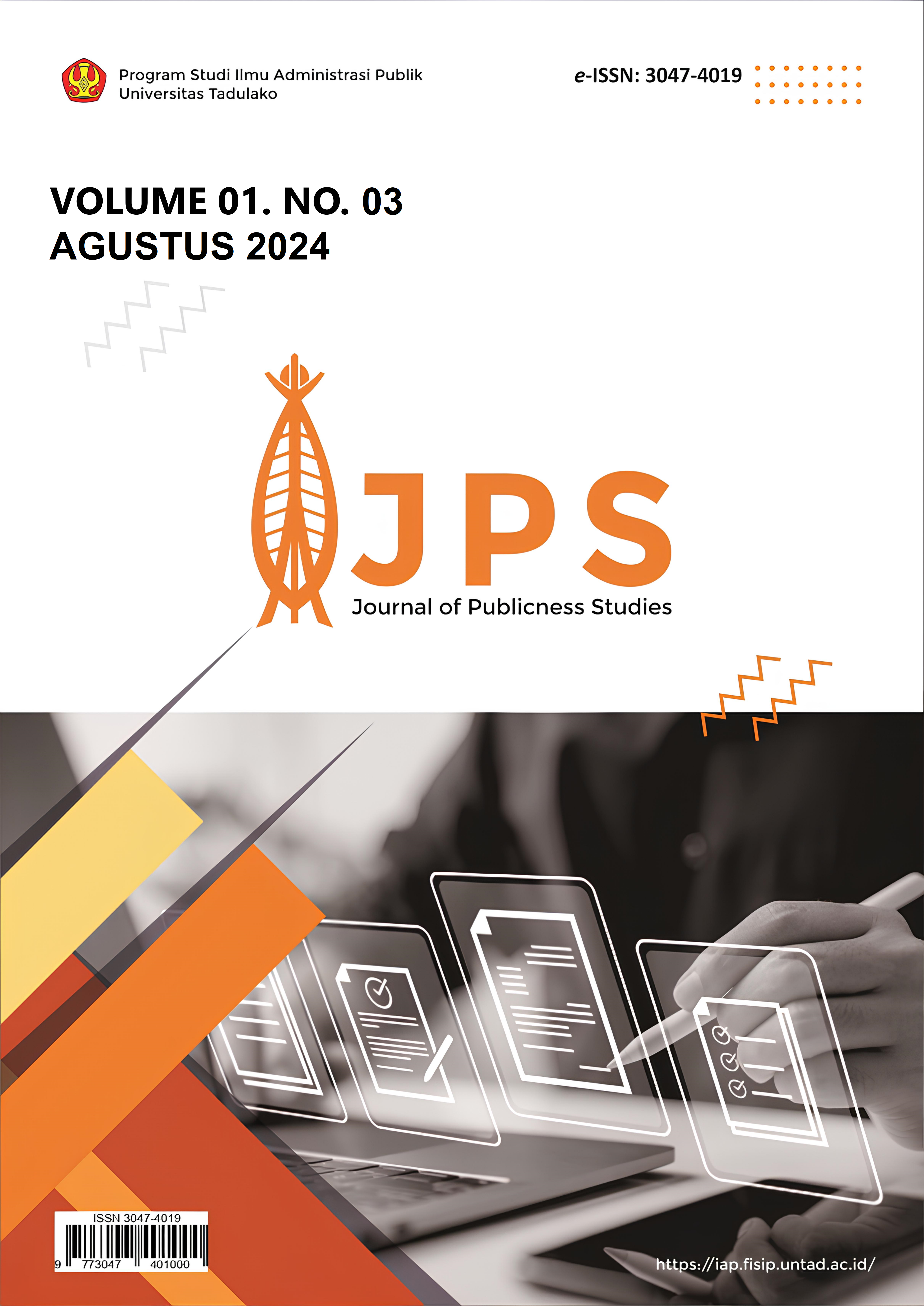KUALITAS PELAYANAN PUBLIK MELALUI PENERAPAN ELECTRONIC TRAFFIC LAW ENFORCEMENT (ETLE) DI KANTOR DIREKTORAT LALU LINTAS KOTA PALU
plugins.themes.academic_pro.article.main694ce3573dd78
Abstrak
Penelitian ini bertujuan untuk mengetahui Kualitas Pelayanan Publik Terkait Penerapan Elektronic Traffic Law Enforcement (ETLE) Di Kantor Direktorat Lalu Lintas Kota Palu. Metode penelitian yang digunakan Deskriptif Kualitatif, yaitu memberikan gambaran tentang fenomena atau fokus permasalahan yang tengah diteliti yang terjadi di lokasi penelitian sesuai fakta yang ada. Teknik pengumpulan data yang digunakan adalah observasi, wawancara informan secara mendalam dan dokumentasi untuk mengumpulkan data yang dibutuhkan berupa data primer dan data sekunder. Sedangkan informan dalam penelitian ini berjumlah 7 orang yaitu 4 orang dari pihak Direktorat Lalu Lintas dan 3 orang dari pihak masyarakat yang melanggar. Teori yang digunakan dalam penelitian ini adalah teori Gespersz dalam Hardyansyah (2011:51). dimana ada sepuluh indikator yang digunakan dalam Kualitas Pelayanan Melalui Penerapan Elektronic Traffic Law Enforcement Terhadap Di Kantor Direktorat Lalu Lintas Kota Palu. Kesepuluh indikator tersebut yaitu Ketepatan Waktu, Akurasi Pelayanan, Kesponanan dan keramahan, Tanggung Jawab, Kelengkapan, Kemudahan, Variasi, Pelayanan Pribadi, Kenyamanan, Atribut. Berdasarkan hasil penelitian, menunjukan bahwa Kualitas Pelayanan Publik Melalui Penerapan Elektronic Traffic Law Enforcement (ETLE) Di Kantor Direktorat Lalu Lintas kepolisian Daerah Sulawesi Tengah, sudah berjalan dengan optimal pada indikator Akurasi Pelayanan, Kesopanan dan Keramahan, Tanggung Jawab, Kelengkapan, Pelayanan Pribadi, Kenyamanan serta Atribut. Sedangkan pada indikator Ketepatan Waktu, Kemudahan dan Variasi belum berjalan dengan optimal. Hal ini dapat dilihat dari Ketepatan Waktu dalam memberikan pelayanan harus menunggu beberapa menit disebabkan karena jaringan yang bermasalah sedangkan indikator Kemudahan dalam memberikan pelayanan yaitu alur pelayanan ETLE yang rumit untuk diikuti dan indikator variasi dalam memberikan pelayanan. Segala bentuk masalah ini perlu adanya perbaikan agar kedepannya dapat berjalan dengan baik.

